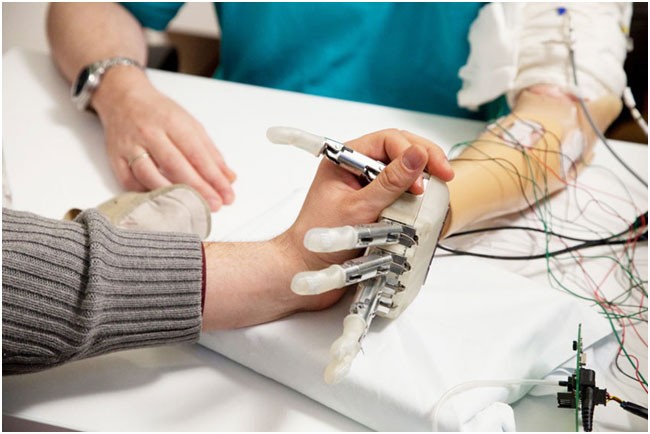The LifeHand 2 Project: grips and senses like a real hand
Studies, which have been carried out furthering the results achieved in 2008, led in 2013 to this latest experimental phase called LifeHand 2. The research project enabling experimentation was named NEMESIS (NEurocontrolled MEchatronic Hand ProstheSIS) and was financed by the Italian Ministry of Health.
LifeHand 2 aims to create a completely implantable prosthesis system, richly sensorized and controlled through the patient's nervous system, with a dexterity comparable to a natural limb. Using a combination of surgically implanted electrodes (connected at one end to the nervous system, and at the other end to sensors) and an algorithm to convert signals, the team has produced a hand that sends information back to the brain that is so detailed that the wearer could even tell the hardness of objects he was given to hold.

Lifehand2 allows the amputee to sense the difference between hard objects, like a glass, and soft objects, like a human hand, and adjust his grip appropriately.
The patient, in particular, was quickly able to:
- combine the sensory areas so to manipulate robustly the overall palm force;
- distinguish the different consistencies of hard, medium and soft objects (with more than 78.7% accuracy);
- recognize the basic shape and size of objects, such as the cylinder of a bottle, the sphere of a baseball ball and the oval of a mandarin (88% accuracy);
- understand the location of an object in relation to the hand and employing the most appropriate grasp (97% accuracy);
- self-rectify when applying the wrong amount of pressure on an object during the movement itself, thanks to a communication flow between the prosthesis and the brain in a reaction time of less than 100 milliseconds;
- manage in real time the different levels of exerted force for the two different nerve sensory areas (index finger-thumb, small finger) while holding an object in palm of hand (with 93% accuracy).